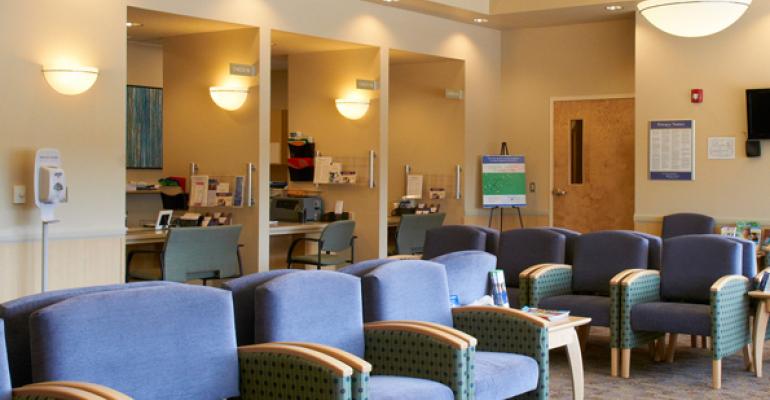Athletico Physical Therapy recently opened its thirty-first location in the Greater St. Louis area, and its latest store just happens to blend consumers’ need for physical wellness with easy access seasonal items like outdoor furniture and everyday staples.
The orthopedic rehabilitation provider is located in a large community center called Green Mount Crossing in Shiloh, Ill. Athletico’s neighbors include big-box stores such as World Market and Target, so an existing physical therapy patient could get a ride to his or her appointment, while the companion runs several errands inside the shopping center. The move is part of a growing trend in American retail real estate: medical service providers taking up space in retail locations.
“There is an increase in the gross rent that could be relegated to things that are medical,” says Todd Caruso, senior managing director at real estate services firm CBRE, who leads the firm’s retail owner/agency practice.
The list of unconventional users includes tattoo parlors, massage therapy locations, schools, gun ranges, churches and even funeral homes that have taken space in retail centers, says Tandy Patrick, a partner in the real estate practice at Bingham Greenebaum Doll LLP, a regional law firm located in Louisville, Ky.
“The overall trend of ‘non-traditional’ users in shopping centers will continue to increase in coming years,” Patrick says. “Many uses that previously have been taboo are now appearing in centers.”
Specifically, medical providers in retail spaces represent two compelling forces directing lives in the U.S. right now: Americans are spending more on health care, and want to do so in locations that are as convenient as they are safe. Also, landlords and investors are vigilantly looking for creditworthy tenants who can also consistently draw foot traffic to their properties. Not all medical services are suited to every available retail vacancy. Good partnerships do crop up, however, and it is a formula that both landlords and real estate investors are learning to perfect.
The retail real estate play
In an age where spending is constrained in almost every area of retail, it is clear that Americans are redirecting their dollars to essential services, including healthcare. Health Affairs, a leading journal of health policy and research, projects a 5.8 percent growth in health spending between 2015 and 2024, in a July 2015 report. The health share of the U.S. gross domestic product will reach 19.6 percent in 2024.
The most common example of health spending in a retail environment is in retail clinics. When they were first created about 15 years ago, retail clinics were independent investor businesses, says Mary Kate Scott, founder of Scott & Co., a management consulting firm specializing in healthcare organizations. Now, CVS and Walgreens own about 95.0 percent of those locations, which are embedded inside their stores, Scott says.
For consumers, the appeal is cost savings and convenience. In an April 2015 study titled, “The Value Proposition of Retail Clinics,” Robert Wood Johnson cited research that said retail clinics and urgent care centers could appropriately handle 27.0 percent of emergency department visits. So pre-flu symptoms and other milder maladies that often stretch costly emergency room resources could be assessed and diagnosed at a retail clinic. The savings are significant, about $4.4 billion per year.
The success of retail clinics notwithstanding, Scott says they do not represent the best real estate play for landlords and investors who are considering adding or expanding the medical share of square footage in their centers. For that, landlords should look to sectors that offer consumers several choices of providers, which in turn benefit from visibility and accessibility.
“You could have a chiropractor, maybe you’d have a dentist, or a rehabilitation center,” says Caruso. “You’ve gone from, 10 years ago, having one tenant [option] to now three or four that are rehab, medical or wellness related.”
Retail real estate and healthcare have this much in common: both are widely fragmented. They deliver services in a wide range of environments from online and brick-and mortar shopping on the retail side, to emergency department hospital visits and tele-health providers who can assess, diagnose and prescribe medications via a phone call on the healthcare side.
Landlords looking to fill vacancies with creditworthy tenants likely to stay in their leases long term can always look to major success stories like the 100 Oaks Mall in Nashville, Tenn., which leased about half of its 800,000 to 900,000 sq. ft. of space to Vanderbilt Health. Based on industry observations, the area that offers the best potential partnerships with prospects for consistent growth might be the neighborhood shopping center where patients can pull up to a practice run by dentists or physical therapists.






